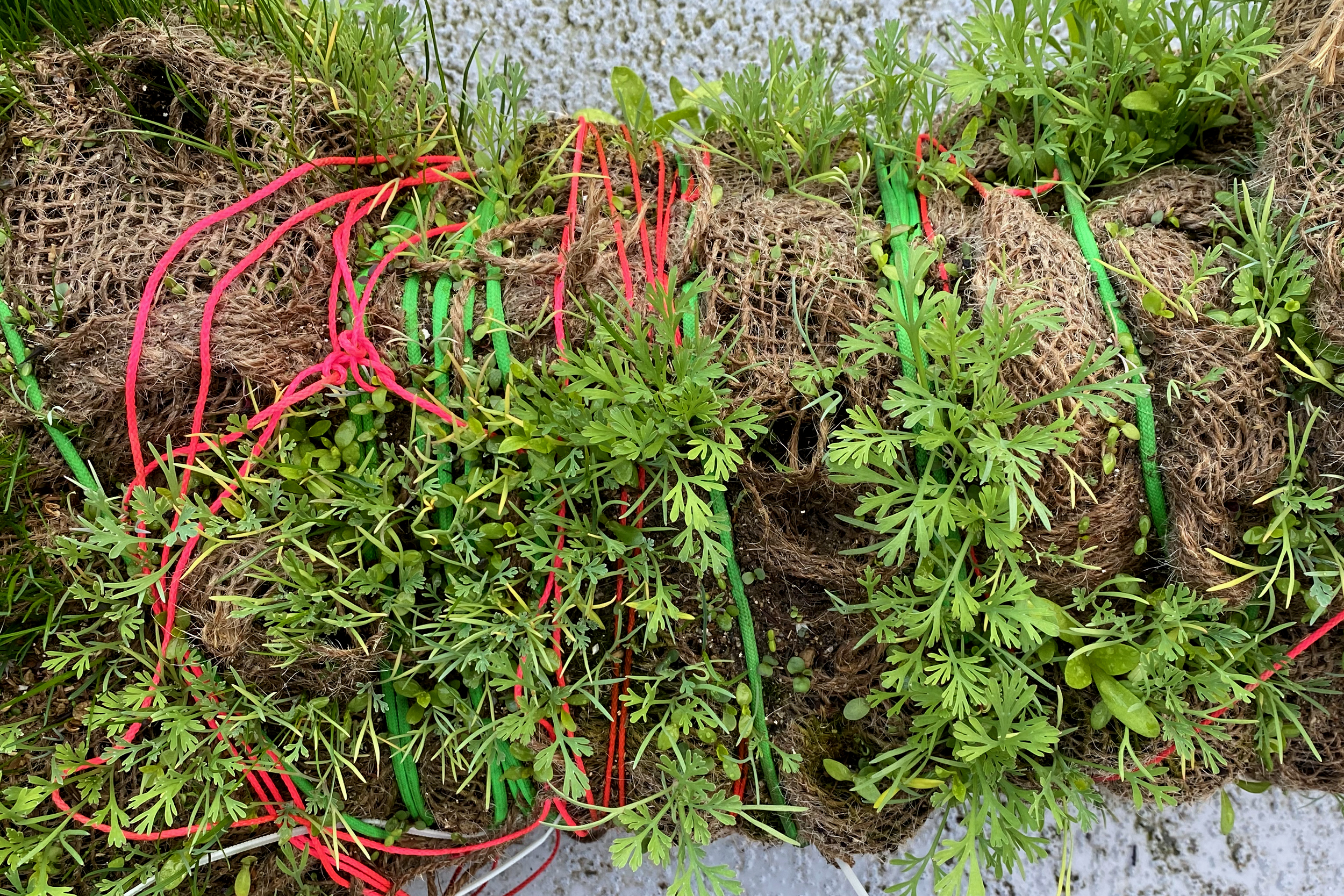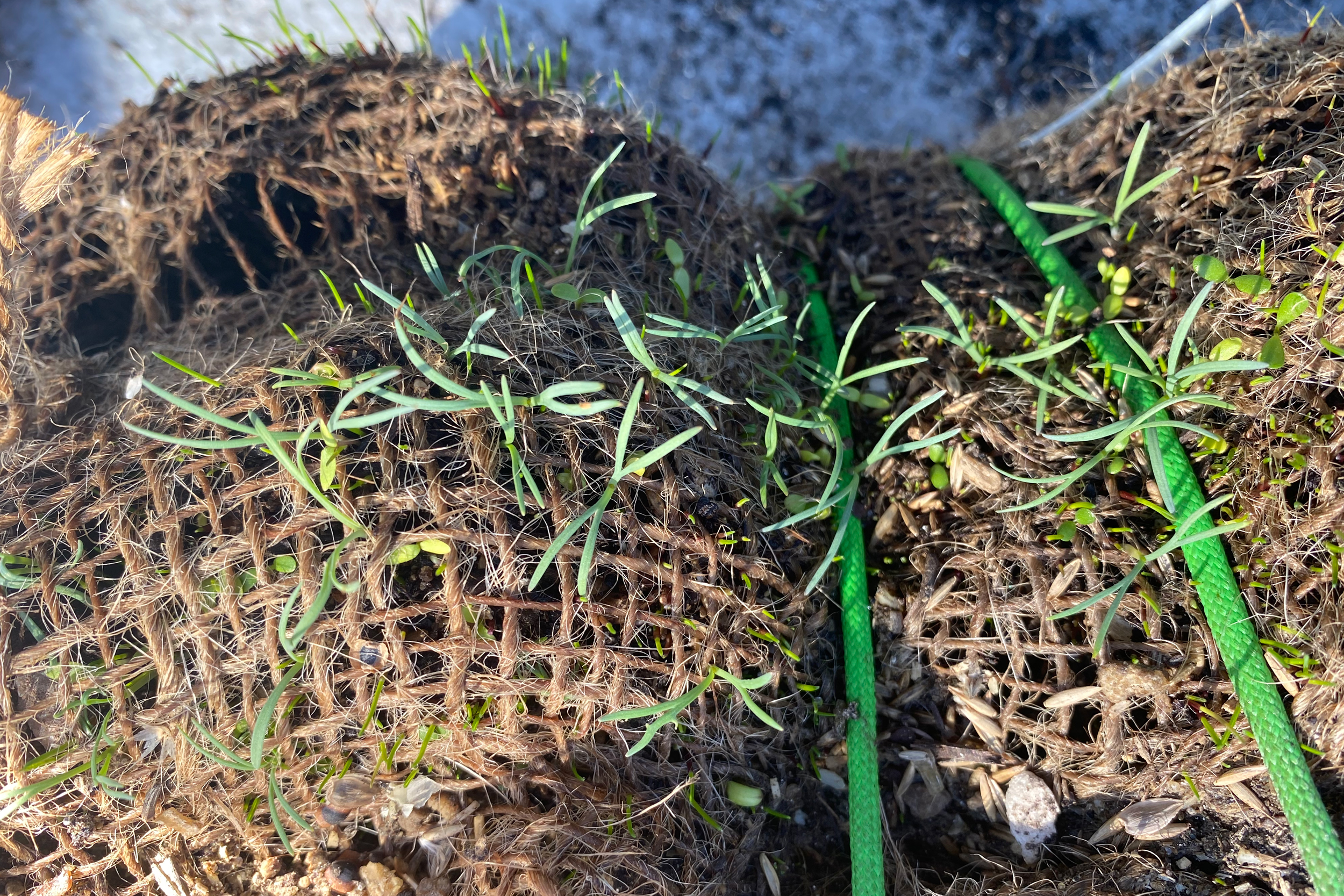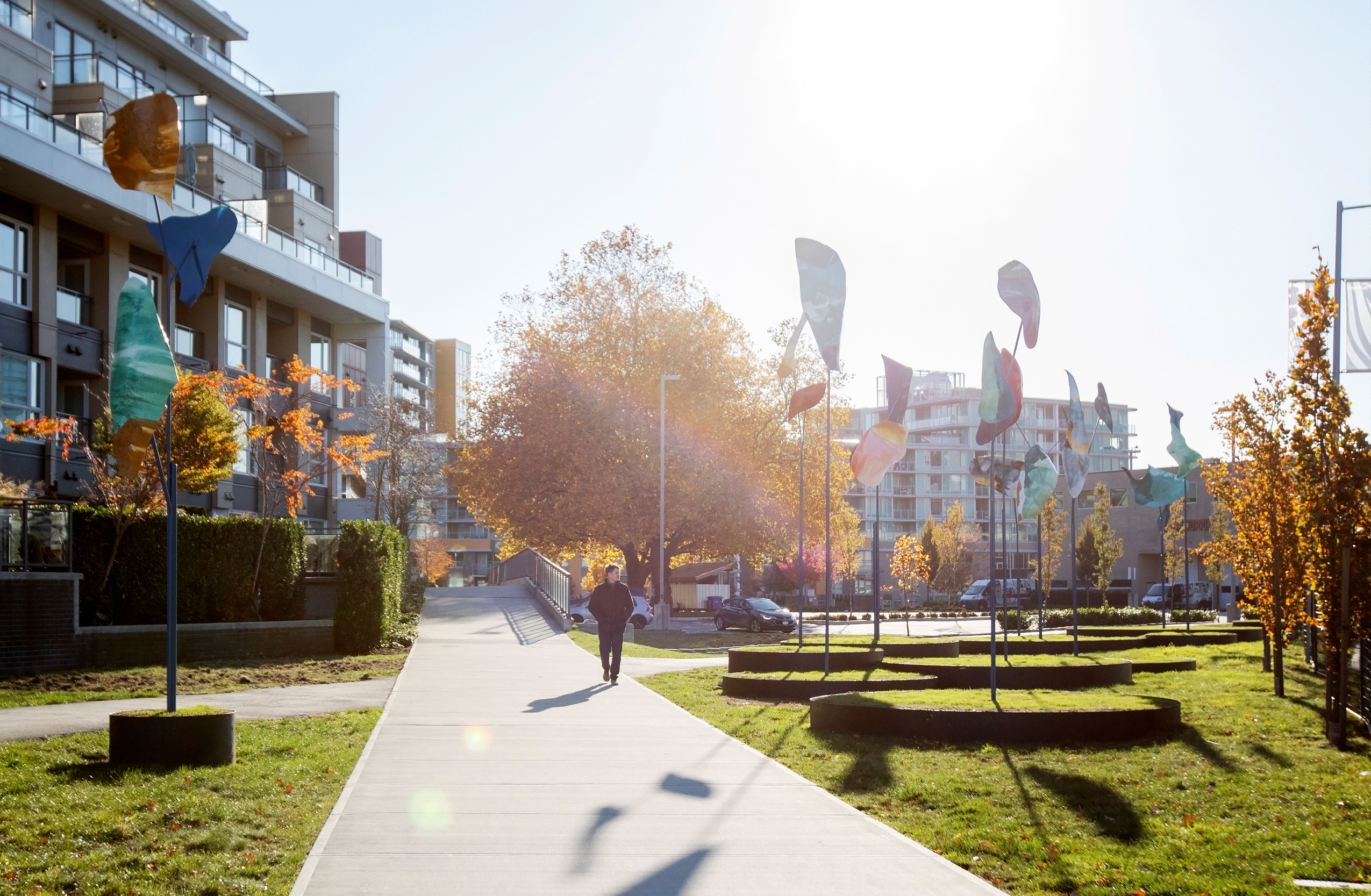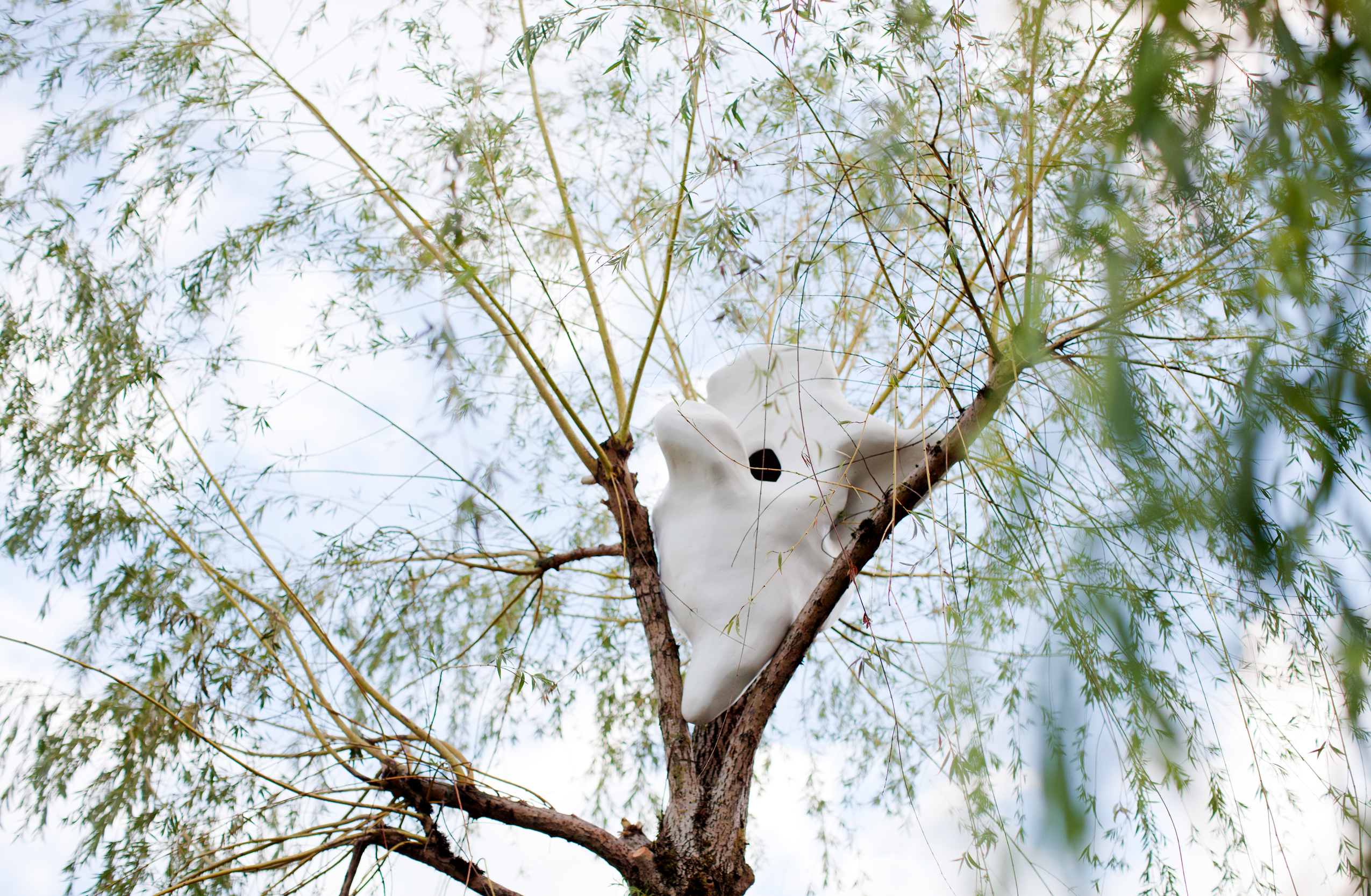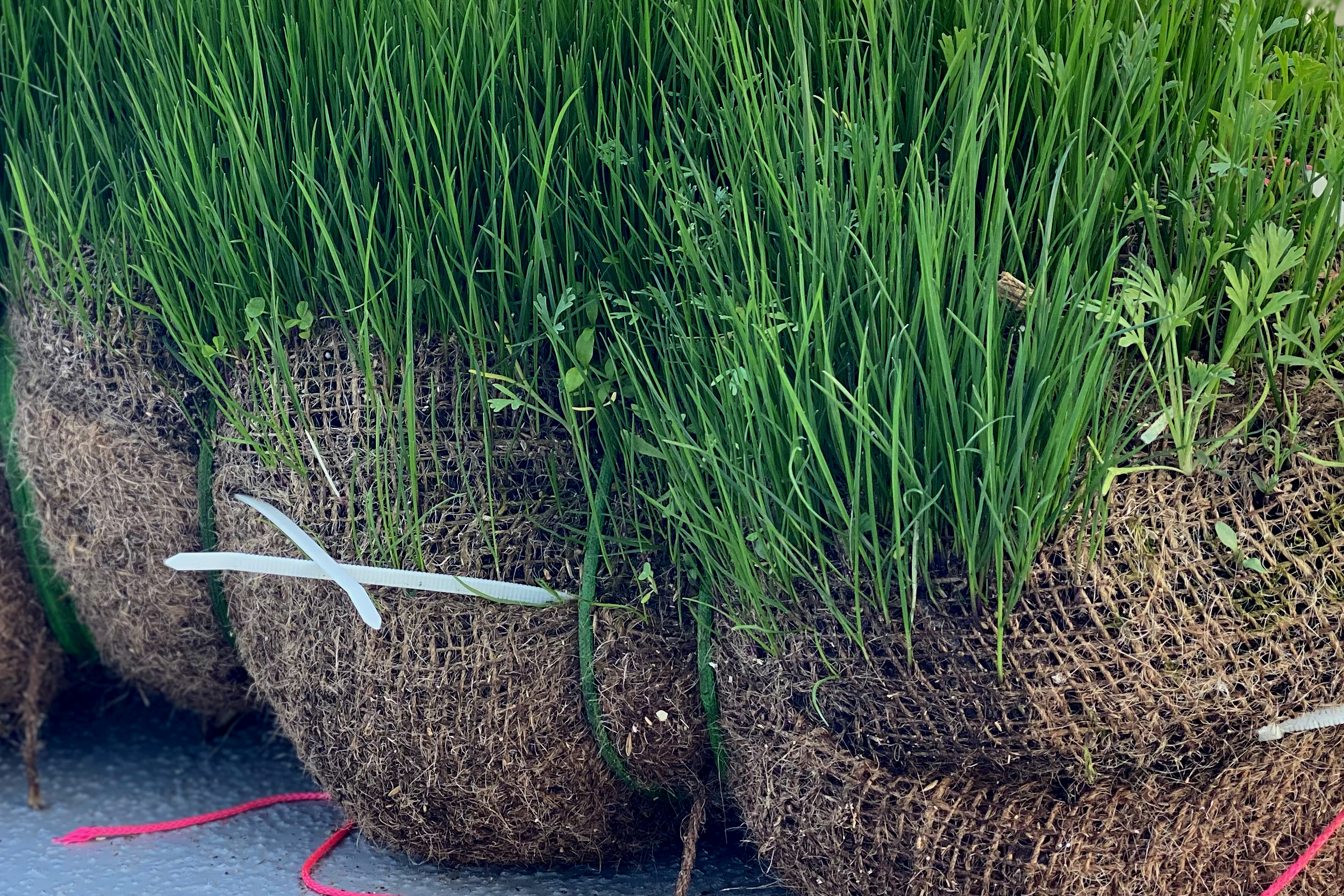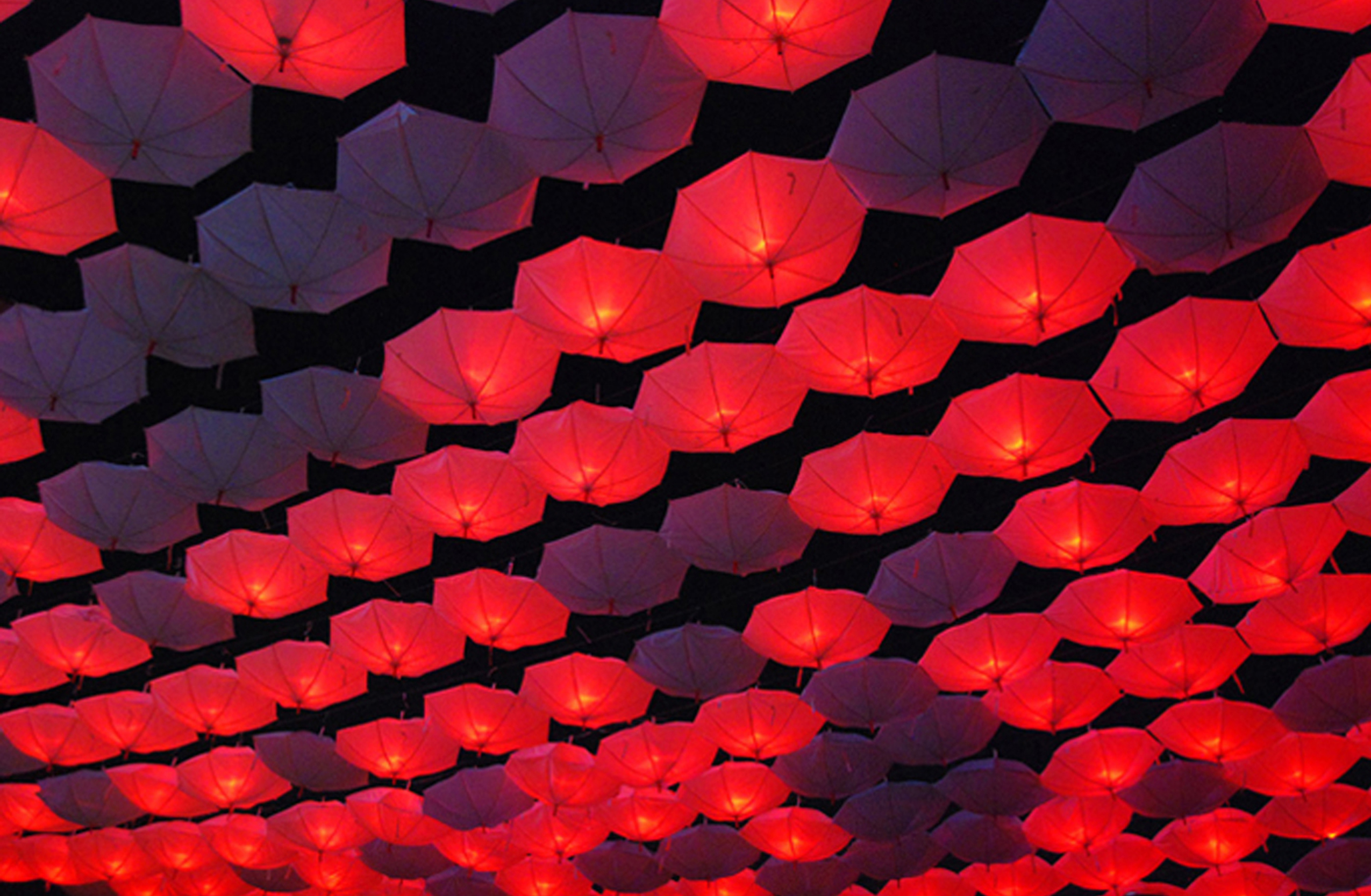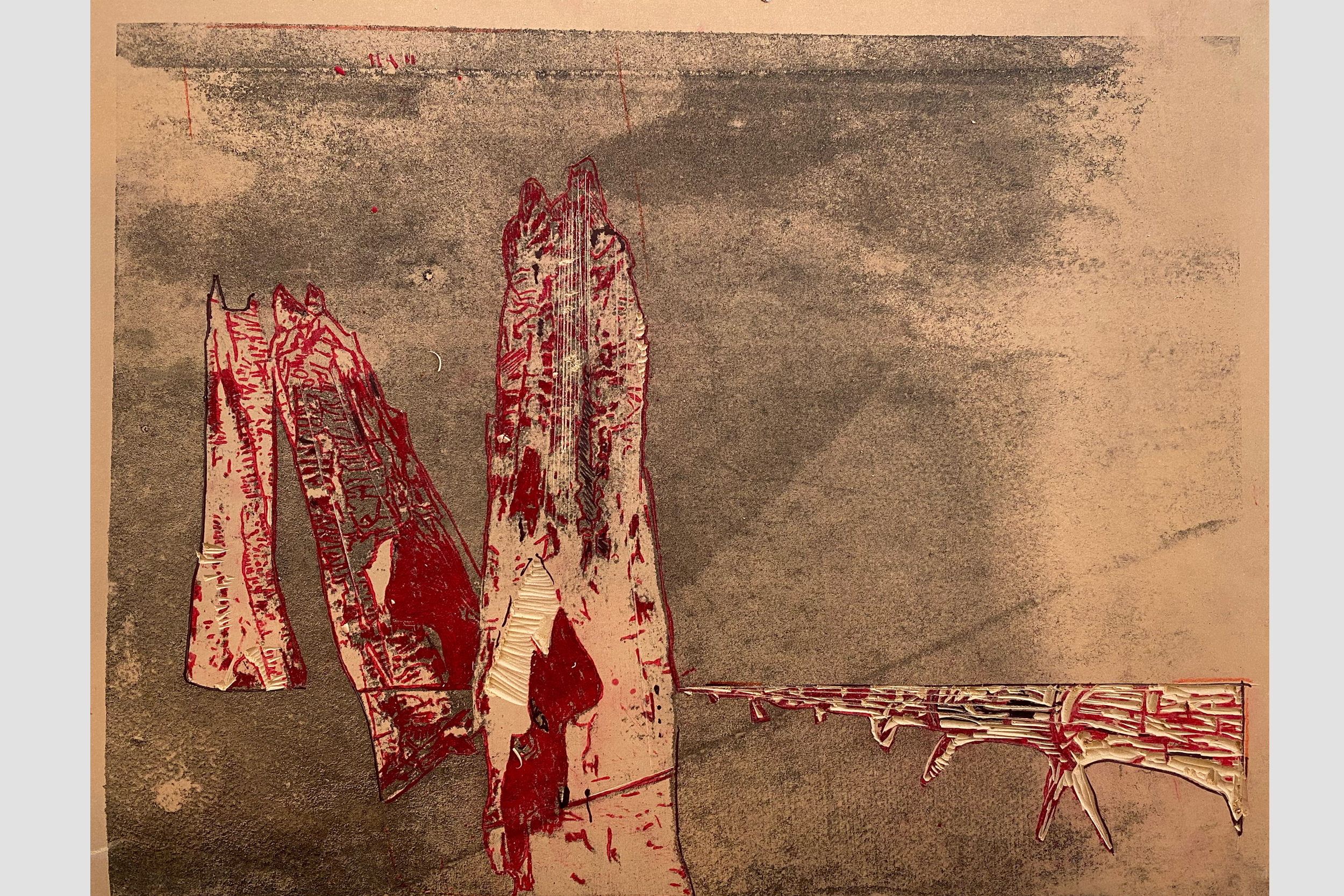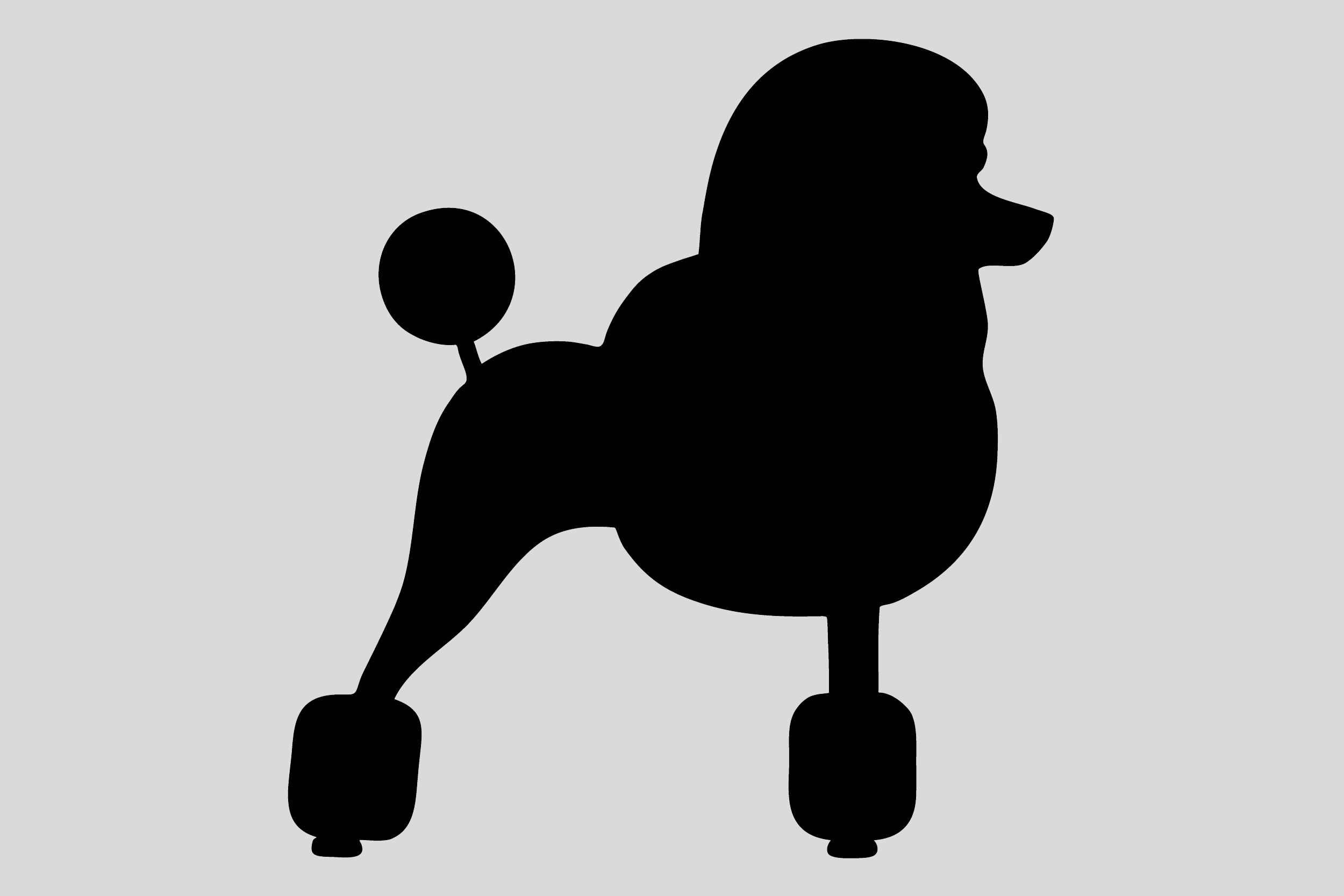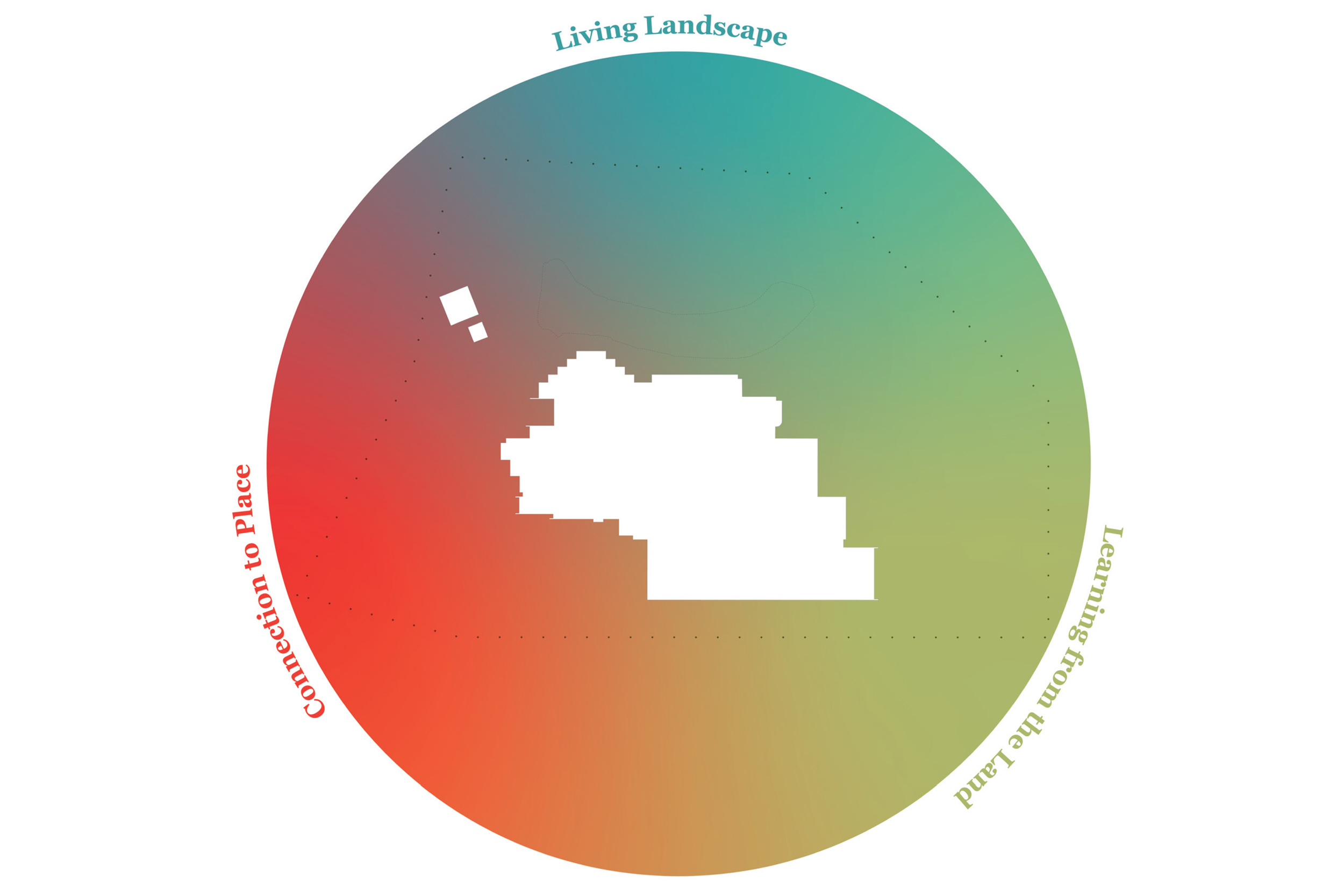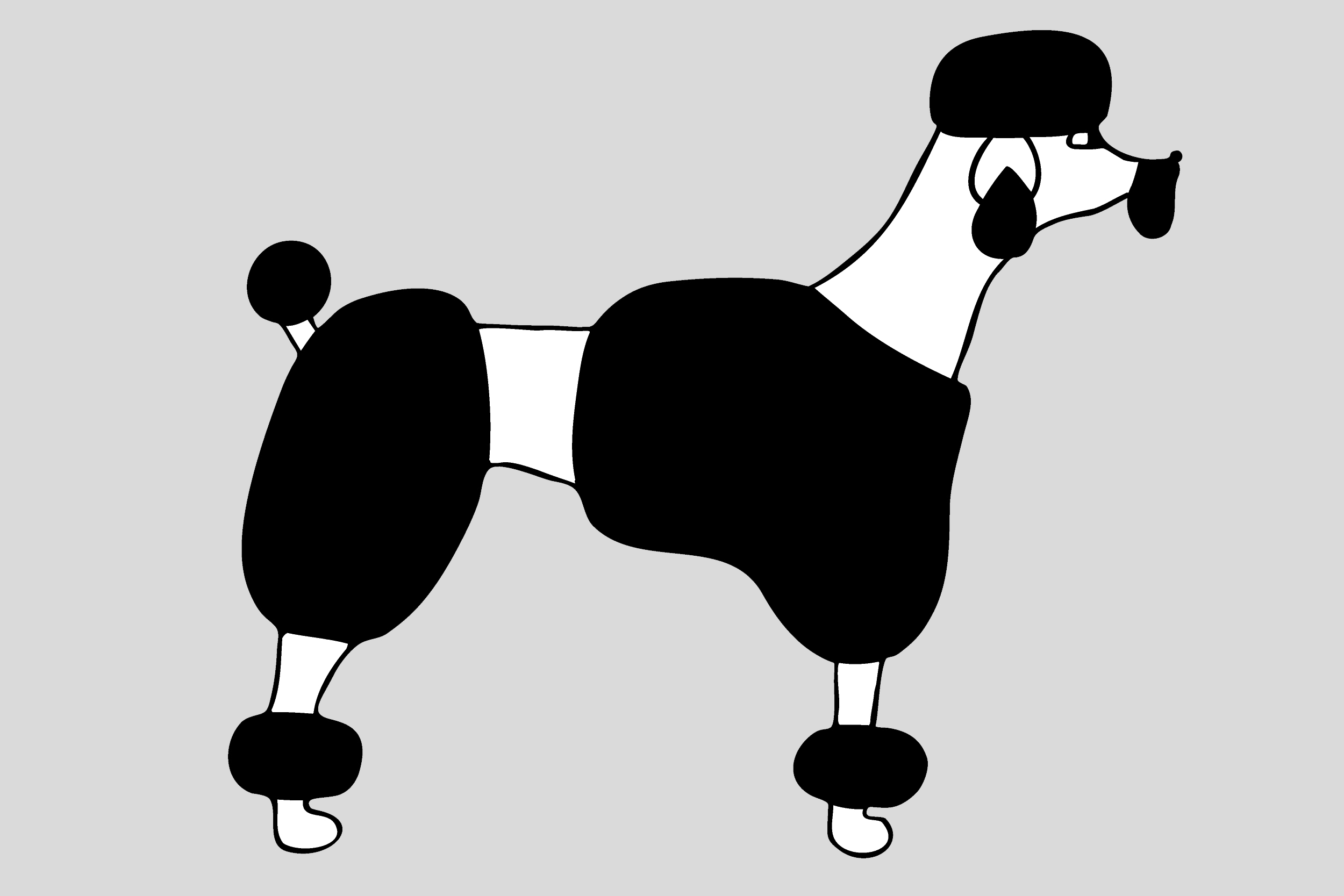
Illustration and graphic work
ABOVE: Series of illustrations for Marc Treib’s book “Poodling: On the Just Shaping of Shrubbery” (2023, ORO Editions). Sample shown: “The Town and Country”, after Miss Cleo (Mrs. Kay Waldschmidt), Poodling Clipping Book (No city given: T.F.H. Publications, 1962).
BELOW: My background in environmental design, cultural landscapes, ecology, and policy come together in much of the consulting work I do around conservation and community development. This is highly collaborative work – especially with communities. The foundation of the approach emerges from processes and methods embedded in community values, well-being, and culture. The aim is to bring transformational change to systems, ways of knowing, and ways of acting.
Samples below are from community development / workshop documents produced for the Gwich’in Tribal Council (co-written with Sarah Daitch) and three planning documents that formed a Report on Landscape Significance at the Museum of Anthropology (MoA) in Vancouver BC (co-written with Jan Haenraets).
BELOW: My background in environmental design, cultural landscapes, ecology, and policy come together in much of the consulting work I do around conservation and community development. This is highly collaborative work – especially with communities. The foundation of the approach emerges from processes and methods embedded in community values, well-being, and culture. The aim is to bring transformational change to systems, ways of knowing, and ways of acting.
Samples below are from community development / workshop documents produced for the Gwich’in Tribal Council (co-written with Sarah Daitch) and three planning documents that formed a Report on Landscape Significance at the Museum of Anthropology (MoA) in Vancouver BC (co-written with Jan Haenraets).



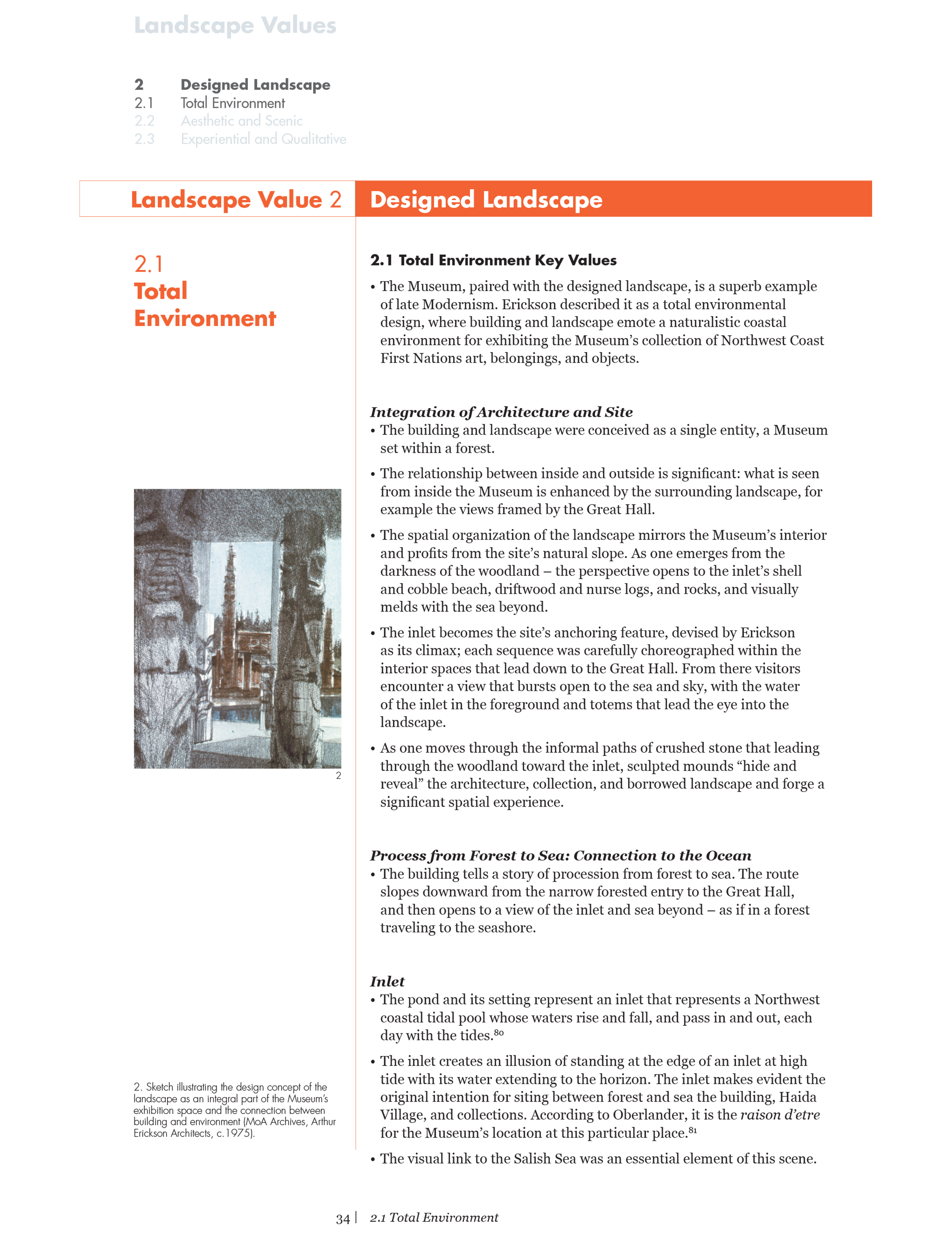
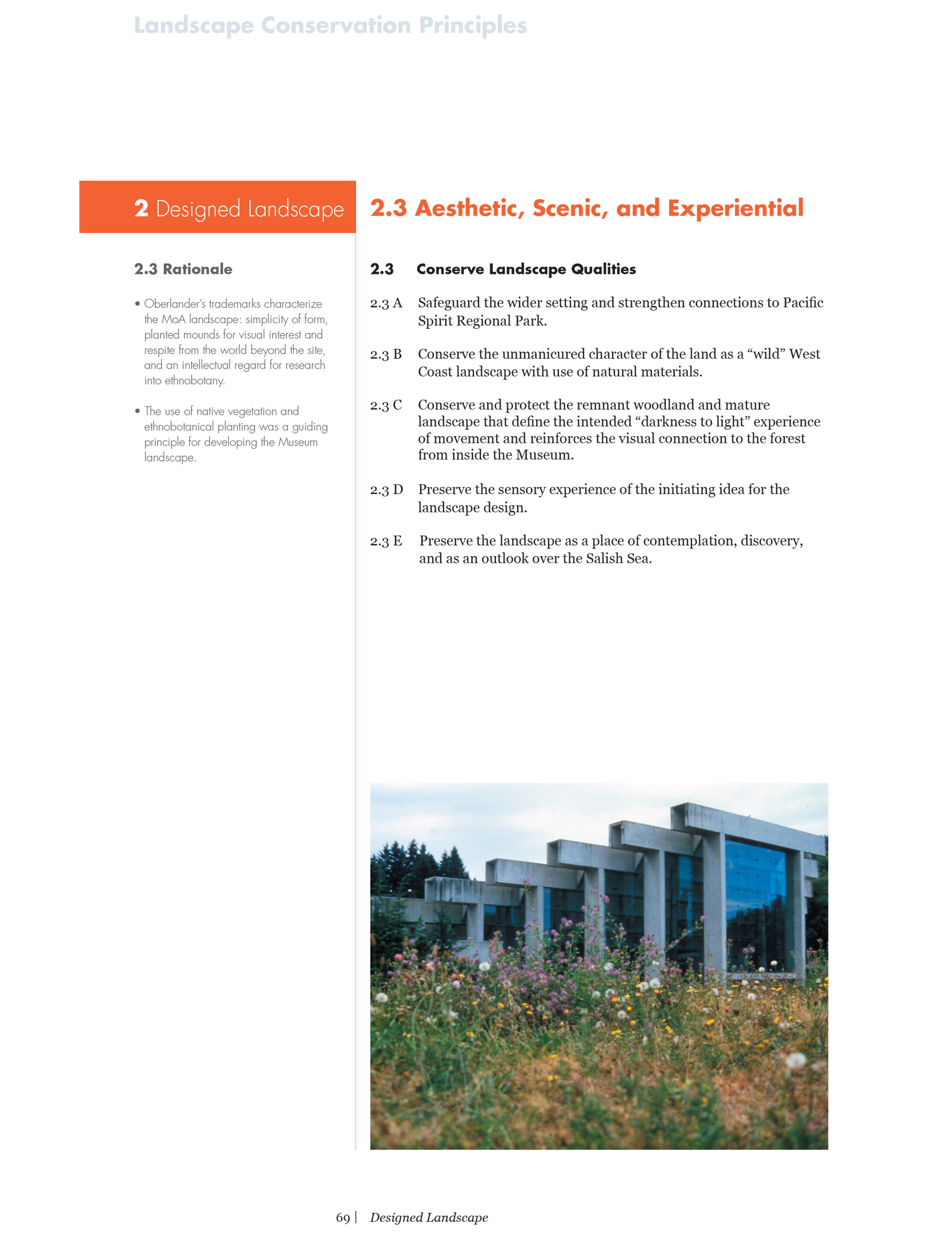






Forest Markings Tests
Measuring / Paired
Location: Korppoo, Finland
Date: June 2022
Media: Forest, masonry string, zip ties, survey flags
Dimensions: Various
Granting Agency: Archipelago Art Residency in Korpo (AARK)
Measuring / Paired
Location: Korppoo, Finland
Date: June 2022
Media: Forest, masonry string, zip ties, survey flags
Dimensions: Various
Granting Agency: Archipelago Art Residency in Korpo (AARK)
This series, undertaken in disturbed forest areas on the island of Korppoo in Finland in 2022, further previous Vancouver studies; in these installations, however, some works engaged trees whose positions suggested a figure that revealed relationships within the selected cluster. In these works, the final figure is more evident. It is important to note that the horizontal string lines temporarily installed in the forest are only as high as I could reach without support; by adding a lower second line, a relation between the two linear elements is established and the reading as a plane suggested. While working with surveyor’s tape or twine recalls the yarn pieces by Fred Sandbeck, there is an essential difference. For one, Sandbeck worked primarily indoors, marking internal spaces, and used the support of walls, ceiling, and floor to suggest a direction for creating latent figures more geometric in their aspect. These outdoor marked interventions reread natural order by seeing within the existing order the possibility of linkages.
Test interventions with string have followed two paths. The first established horizons delineated by string, and derived their presence from thin straight lines set in contrast to the irregular disposition of pine trees and the twisted forms of their branches. The second pursued the definition of a space by marking the relationships of the trunks, and their potential to cohere as the limits of an apse-like space within the greater distribution of the pines, birches, and spruce.
Test interventions with string have followed two paths. The first established horizons delineated by string, and derived their presence from thin straight lines set in contrast to the irregular disposition of pine trees and the twisted forms of their branches. The second pursued the definition of a space by marking the relationships of the trunks, and their potential to cohere as the limits of an apse-like space within the greater distribution of the pines, birches, and spruce.

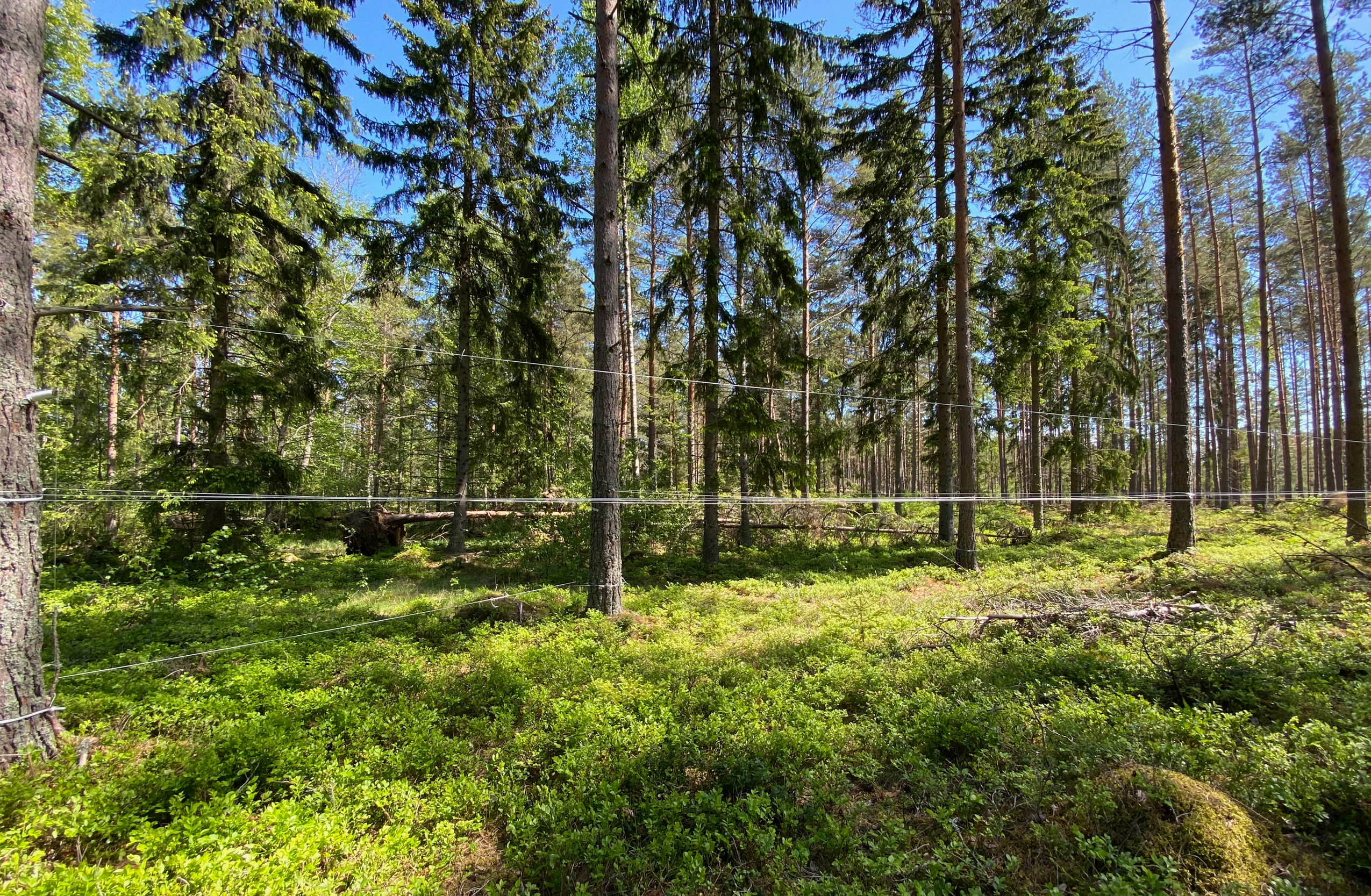
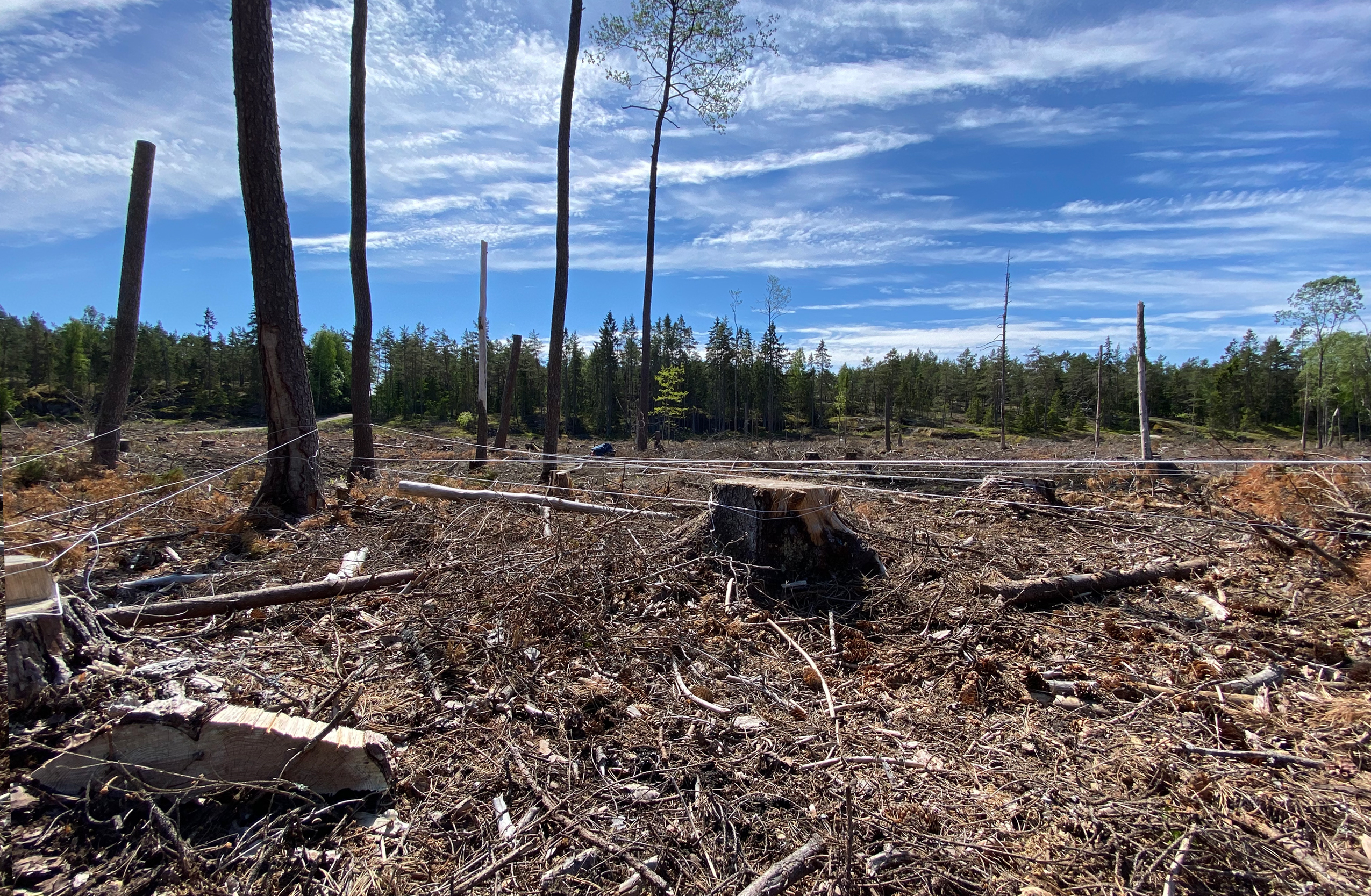
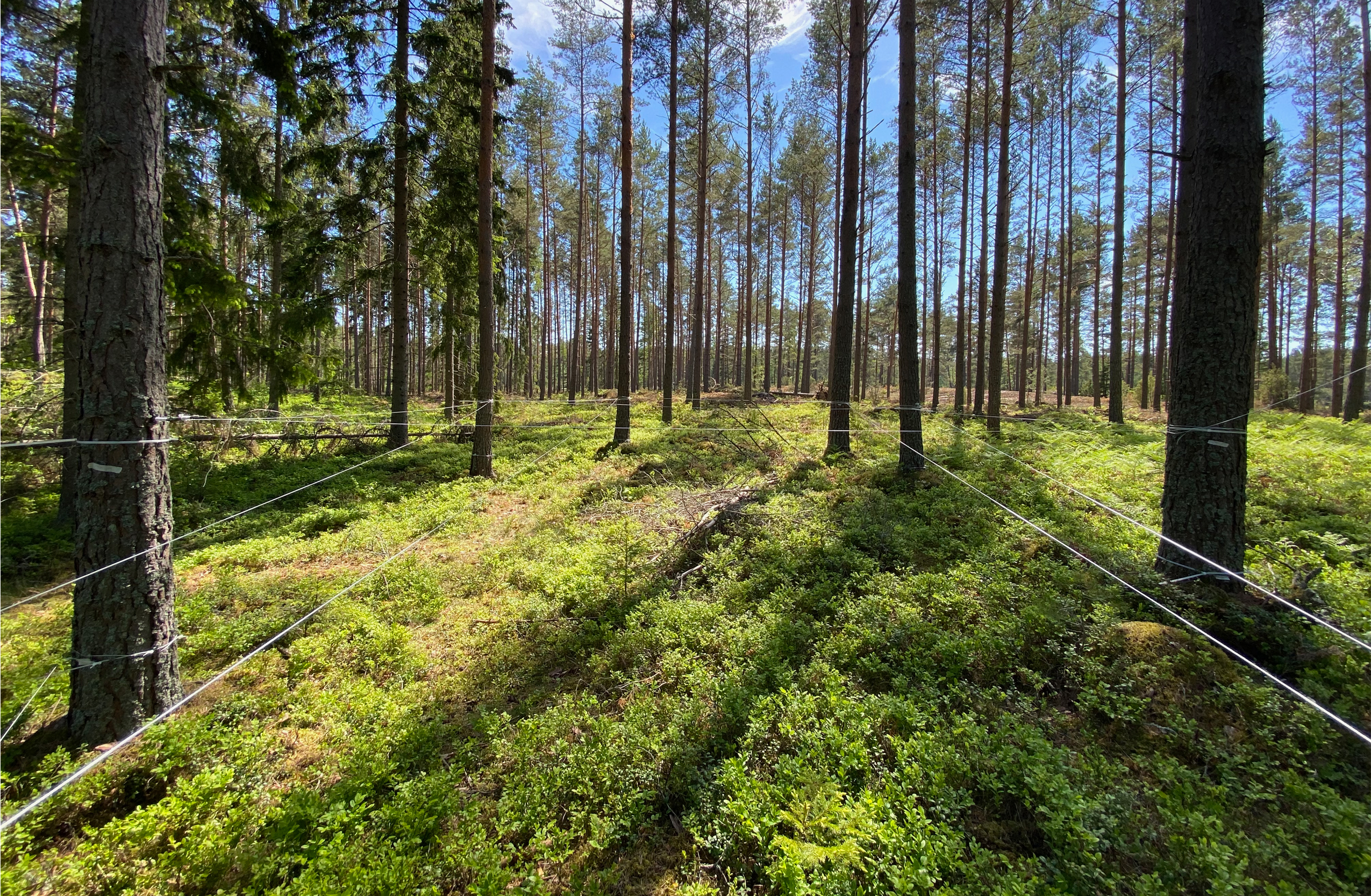

Forest Markings Tests
Safe Crossing for White Tail Deer / Obliques
Location: Korppoo, Finland
Date: June 2022
Media: Forest, masonry string, survey flags
Dimensions: Various
Granting Agency: Archipelago Art Residency in Korpo (AARK)
Safe Crossing for White Tail Deer / Obliques
Location: Korppoo, Finland
Date: June 2022
Media: Forest, masonry string, survey flags
Dimensions: Various
Granting Agency: Archipelago Art Residency in Korpo (AARK)
In tandem with the string pieces, studies on Korppoo turned to installations whose first act is clearing and cleaning, and thereafter uncovering. I selected sites despoiled by logging operations and worked with the trunks of trees felled but left in place. In Safe Crossing for Whitetail Deer I removed accumulations of moss, dirt, twigs, and organic debris from a logging road to create figures that seen in plan would read as four rectangles. Their order on site is less clear, however, due to the depth of the accumulated organic matter and the contour of the rock surfaces. As a cluster the individual rectangles cohere as a figure set in opposition to the axis of the road, with a very distant recall of the white markings of crosswalks for priority crossings of streets. Unlike the string pieces, these removals will remain until natural processes of precipitation, wind, and growth will reclaim them.
The second installation integrates aspects of clearance with the spatial marking effected by the string. The site, also in a logged forest zone, was covered with the needles, branches and trunks left by tree felling, left one assumes to rot and (possibly) support regrowth. Until that day, the land will appear desolate. Clearing the site of this material, and taking the ground back to its basic contour, revealed the presence of cut trees that had fallen as if a giant version of a game of pick-up-sticks. Tree stumps played counterpoint to tree trunks. One could have left work on the site at this stage as a counterpoint to the patter of trees left vertical. But once again using string, the lines of the trunks were extended in space to conjoin in selected points among them. In addition, the intersections of two trunks were lashed with the string to underscore the points at which the linear forms of two or more trunks intersected in a field that could be plotted—and given attention by the lashings.
The second installation integrates aspects of clearance with the spatial marking effected by the string. The site, also in a logged forest zone, was covered with the needles, branches and trunks left by tree felling, left one assumes to rot and (possibly) support regrowth. Until that day, the land will appear desolate. Clearing the site of this material, and taking the ground back to its basic contour, revealed the presence of cut trees that had fallen as if a giant version of a game of pick-up-sticks. Tree stumps played counterpoint to tree trunks. One could have left work on the site at this stage as a counterpoint to the patter of trees left vertical. But once again using string, the lines of the trunks were extended in space to conjoin in selected points among them. In addition, the intersections of two trunks were lashed with the string to underscore the points at which the linear forms of two or more trunks intersected in a field that could be plotted—and given attention by the lashings.
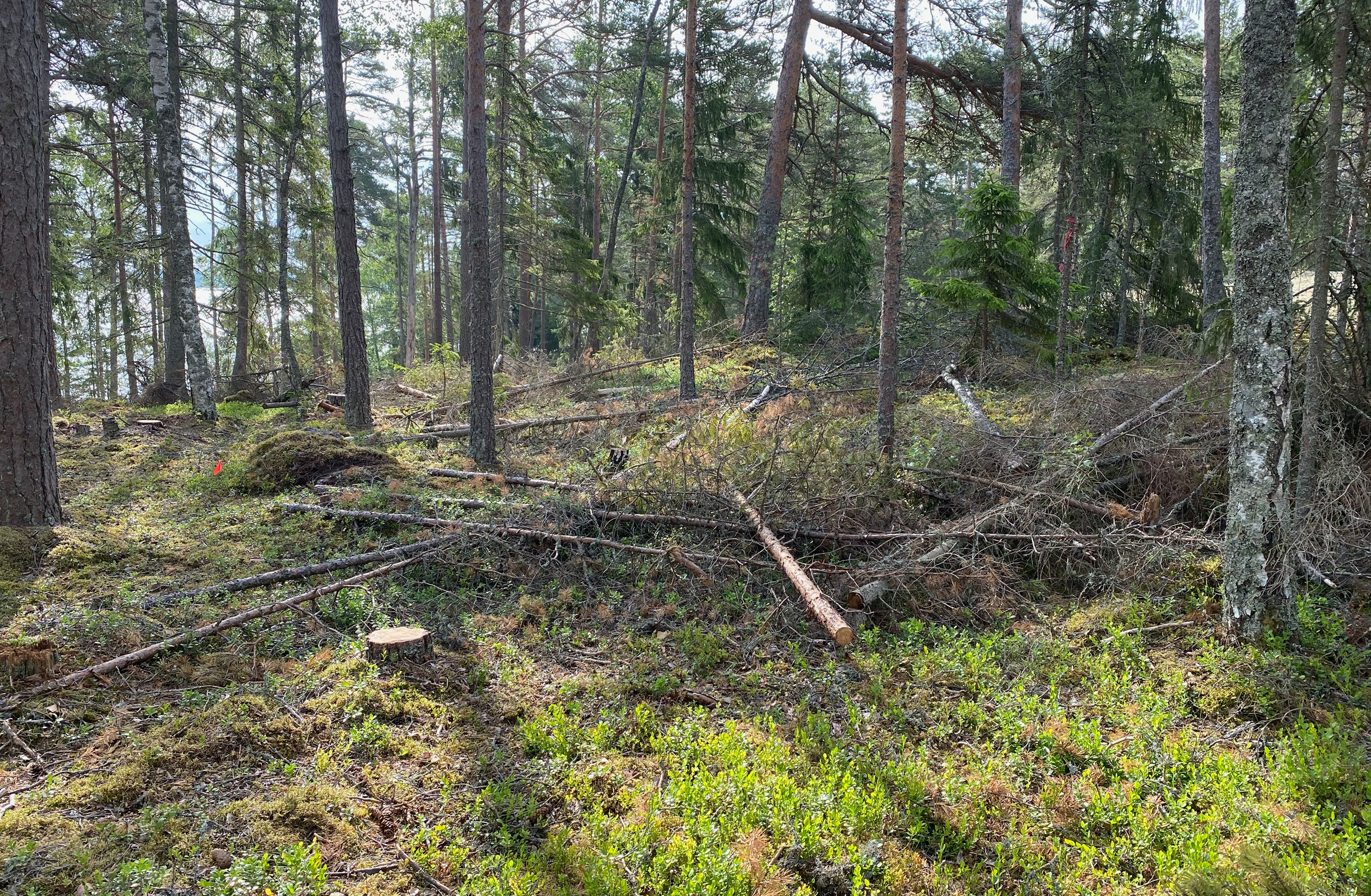



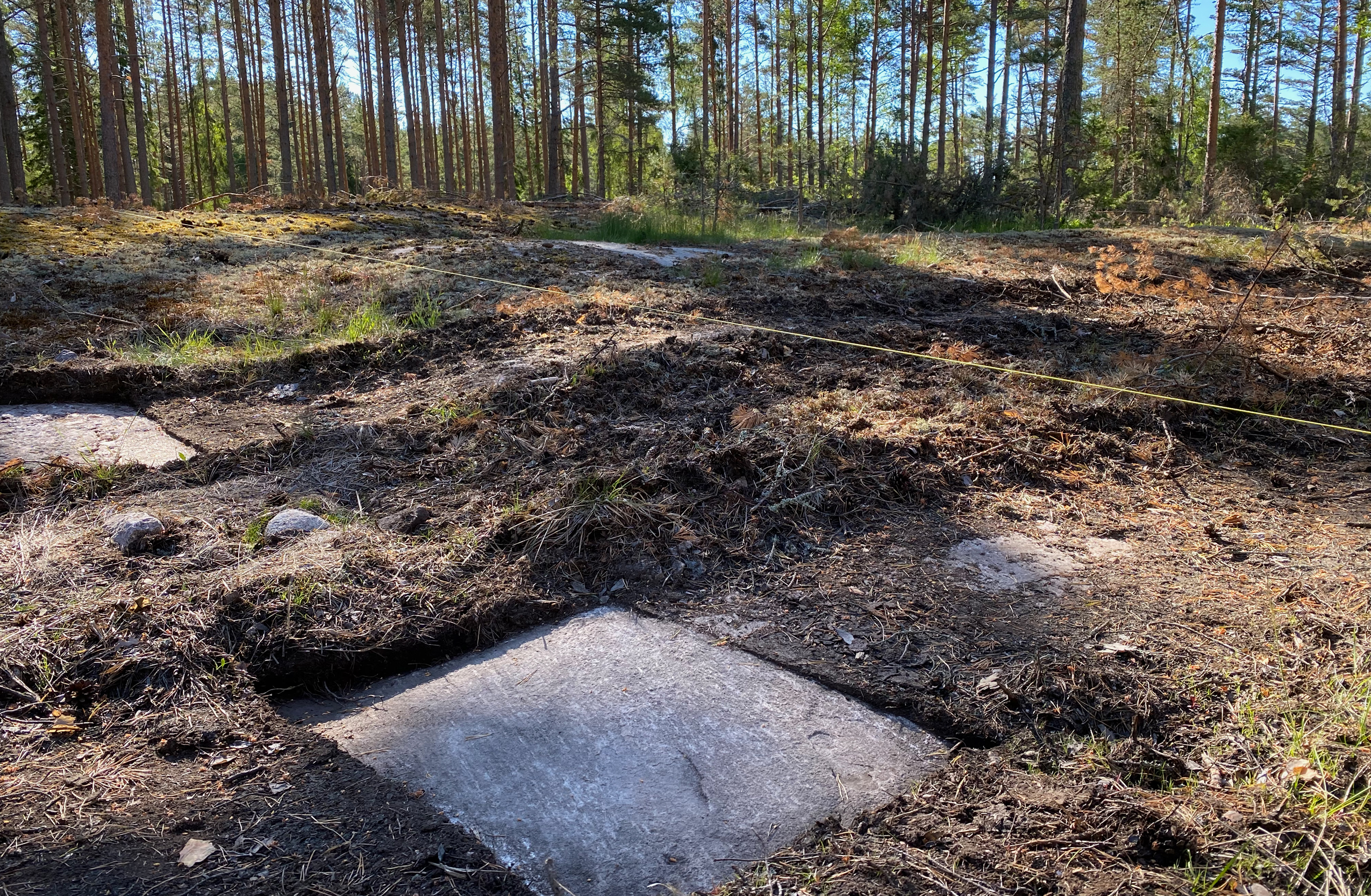
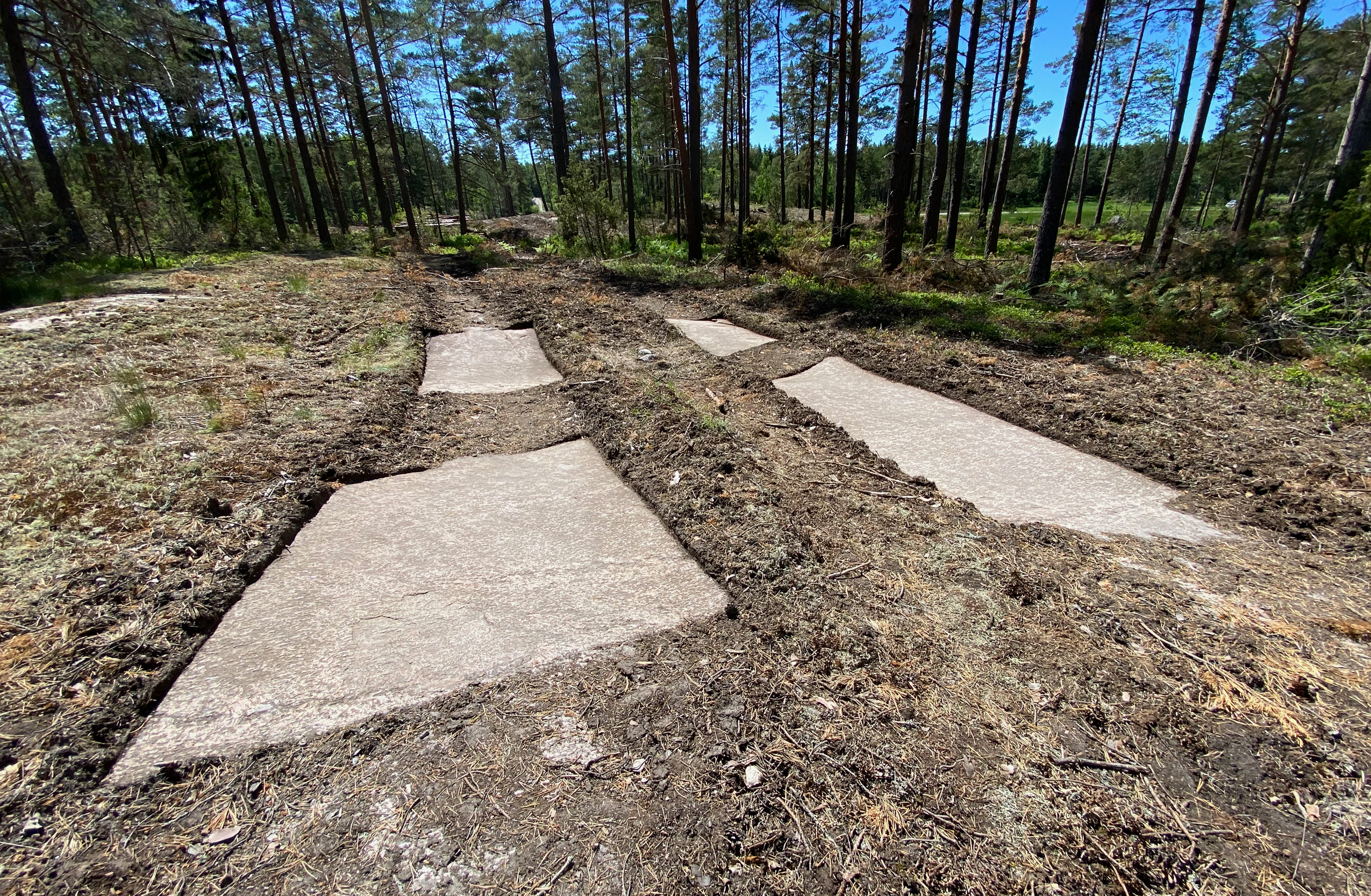





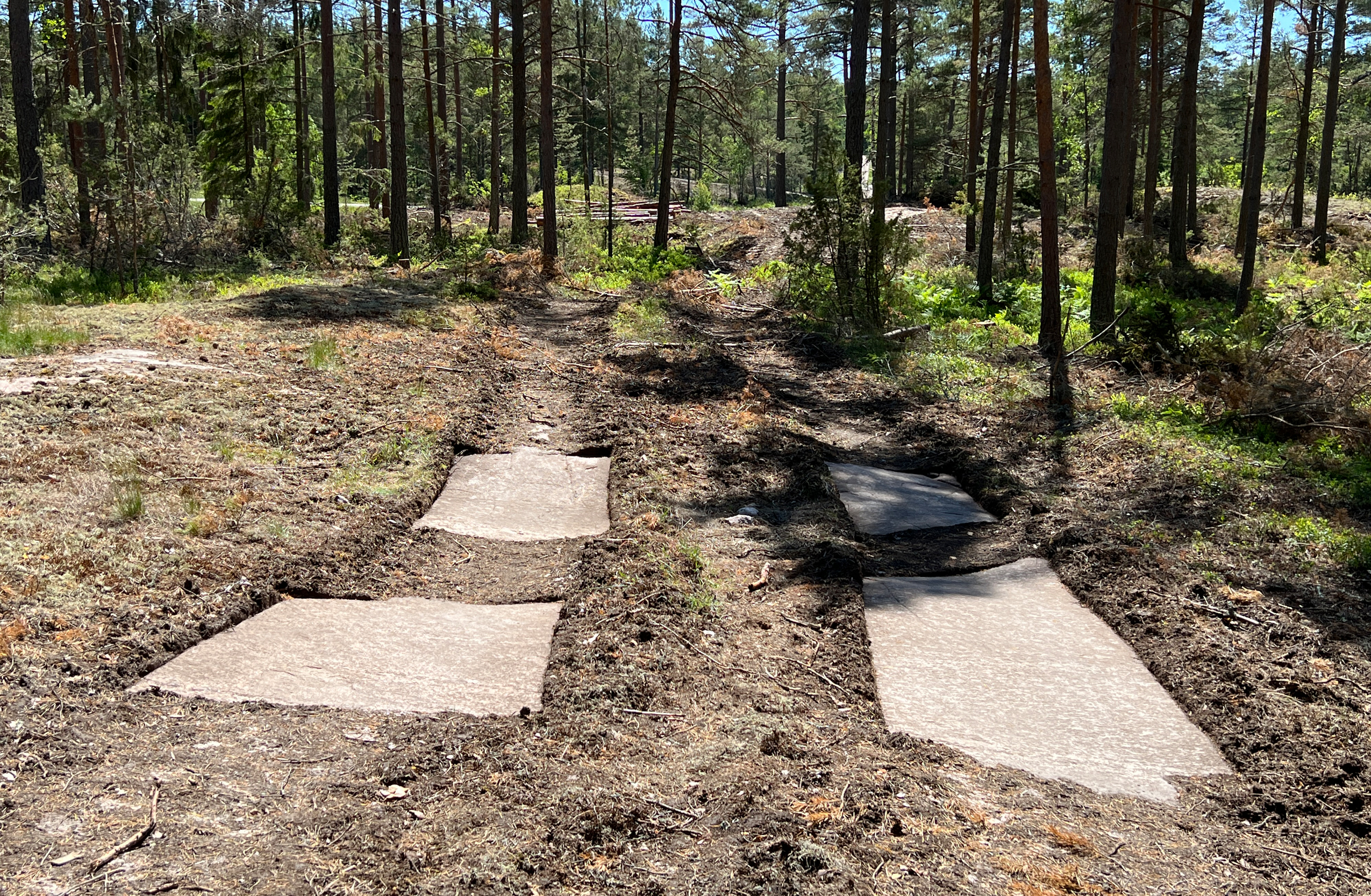
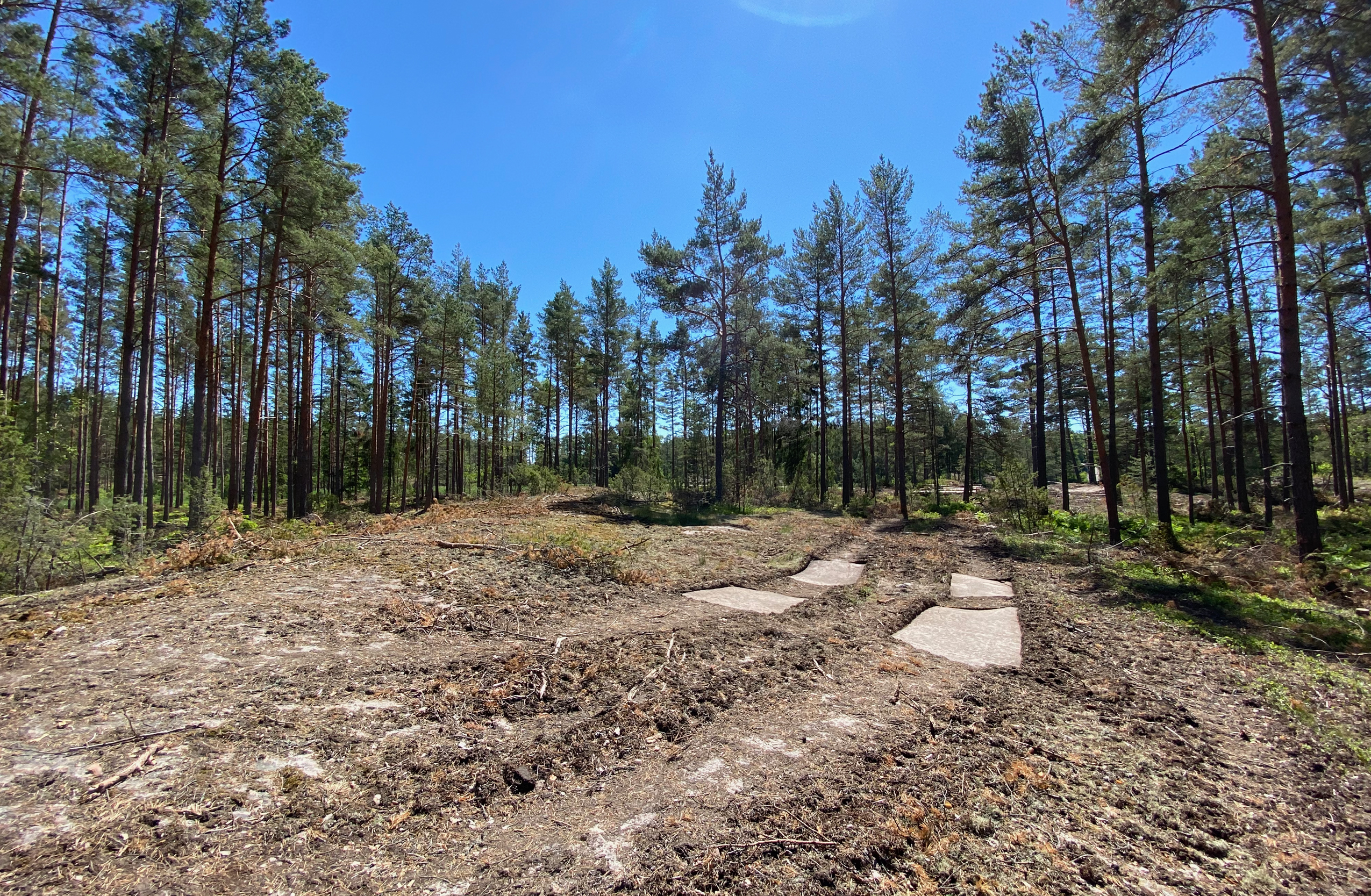


Aino [nurse log]
Location: Korppoo, Finland
Date: June 2022
Media: Forest, burlap, twine
Dimensions: 14’ length, 1’5” width
Granting Agency: Archipelago Art Residency in Korpo (AARK)
Location: Korppoo, Finland
Date: June 2022
Media: Forest, burlap, twine
Dimensions: 14’ length, 1’5” width
Granting Agency: Archipelago Art Residency in Korpo (AARK)
Nurse logs are fallen trees that over time, as they deteriorate, come to serve as habitat for animals, insects, and even the growth of new plants, whether of the same species or others that the putrefying mass of the log now has come to “nurse.” In this work the “logs” are constructed. Using sheets of loose-weave burlap I created loose cylinders filled with soil, fertilizer, and seeds. These are bound together with twine and rope to create a log like form. In its initial form, the straight lines of the nurse logs are used to play against the irregular distribution of the tree trunks, their horizontals playing against their verticals.
Though the test on Korppoo was installed mid-month and the full result will remain unknown, wildflowers can be seen emerging within the second week. For further description of this series, see: Ernie [nurse log]. The nurse log series remains in its infancy.
Though the test on Korppoo was installed mid-month and the full result will remain unknown, wildflowers can be seen emerging within the second week. For further description of this series, see: Ernie [nurse log]. The nurse log series remains in its infancy.
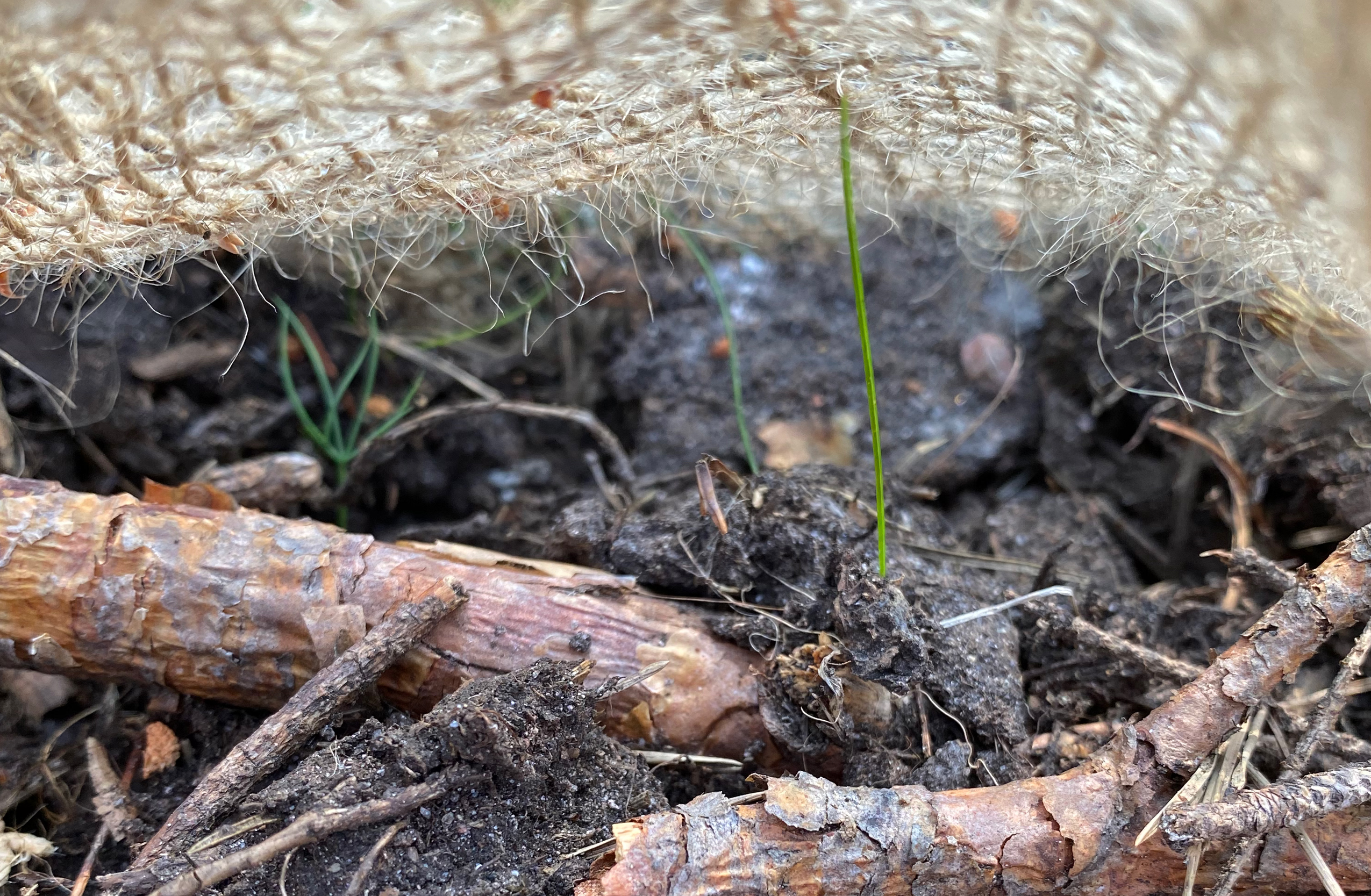
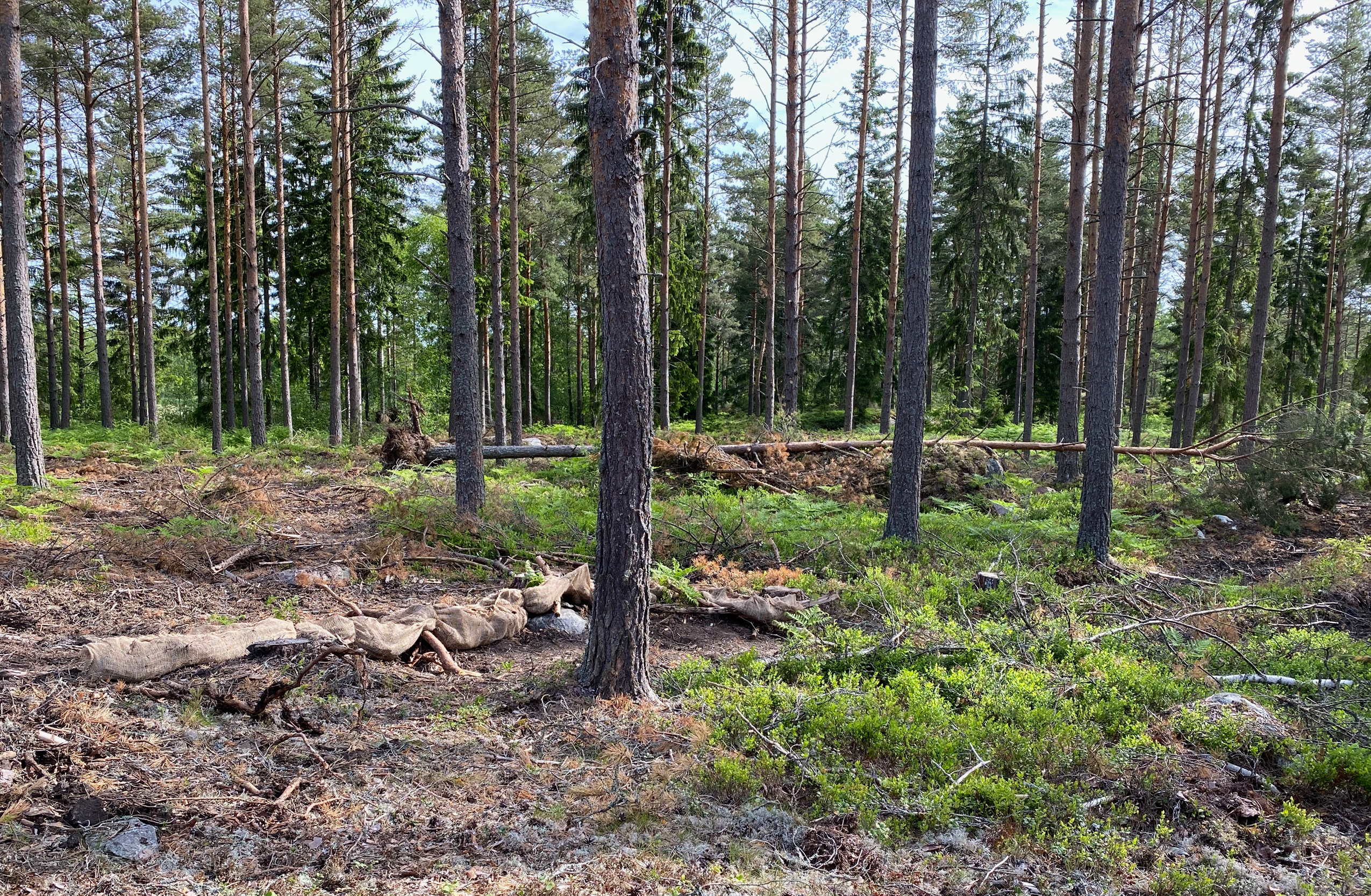

Ernie [nurse log]
Location: Vancouver, BC, Canada
Date: 2021
Media: Burlap, twine, soil, zip ties, rope, grass seed, wildflower mix
Dimensions: 3’ length, 1’5” width
Location: Vancouver, BC, Canada
Date: 2021
Media: Burlap, twine, soil, zip ties, rope, grass seed, wildflower mix
Dimensions: 3’ length, 1’5” width
Nurse logs are fallen trees that over time, as they deteriorate, come to serve as habitat for animals, insects, and even the growth of new plants, whether of the same species or others that the putrefying mass of the log now has come to “nurse.” In this work the “logs” are constructed. Using sheets of loose-weave burlap I created loose cylinders filled with soil, fertilizer, and seeds. These are bound together with twine and rope to create a log like form. In its initial form, the straight lines of the nurse logs are used to play against the irregular distribution of the tree trunks, their horizontals playing against their verticals.
For further description of this series, see: Aino [nurse log]. The nurse log series is in a very early exploration stage.
For further description of this series, see: Aino [nurse log]. The nurse log series is in a very early exploration stage.


